A stunning country kitchen, which draws inspiration from the late Victorian kitchen at Lanhydrock, Cornwall
The kitchen of Lanhydrock House in Cornwall provided the inspiration for a stunning new kitchen, designed by Bruce Hodgson of Artichoke.

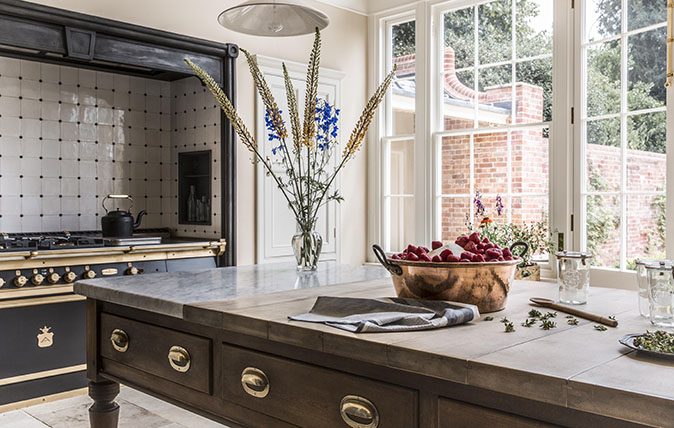
Kitchens of great English country houses such as Castle Drogo, Erddig and Knole offer an untapped source of inspiration for kitchen designers. When planning this kitchen for the owners of a Queen Anne house in Hampshire, Bruce Hodgson – who founded the joinery specialist Artichoke almost 30 years ago – beat a path to the door of the beautiful National Trust house near Bodmin in search of ideas.

‘When Viscount Clifden inherited the house from his father in 1882, it had been damaged by fire and he set about refashioning it,’ he explains. ‘The project included the construction of a kitchen, the focus of which was one large kitchen table that was the centre of all the activity.’
His design features Mr Hodgson’s interpretation of the cook’s table, with a base frame made from Artichoke’s ‘precious stock’ of Scottish white elm, bought 20 years ago. Sycamore planks have been used to create the top, held in place with wrought-iron tie bars and a section of Carrara marble fitted for pastry making.

The handles have been reproduced and made using the same lost-wax cast brass method used to create the originals. The proportions were manipulated to suit the size of the clients’ kitchen and rescaled to make it suitable for use as a work surface (about 7in higher than a standard dining table). Each leg was fitted with a steel pin embedded in a solid-concrete floor pad to support the weight of the top. One leg conceals an electricity cable, which leads to a socket for a food processor.

A feature of Lanhydrock’s kitchen that Mr Hodgson didn’t copy is the cooling system, which used water from the surrounding hills to keep butter and cream cool. Instead, Mr Hodgson’s clients opted for a more modern cooling solution: a fridge cunningly concealed in a cupboard to the left of the range cooker, which Mr Hodgson describes as ‘deliberately difficult to read as a fridge’ – an illusion helped by the fact that the air-circulation grille is hidden below the floor and ducted to the exterior of the property. Another modern convenience, the microwave, is hidden in the right-hand cupboard.
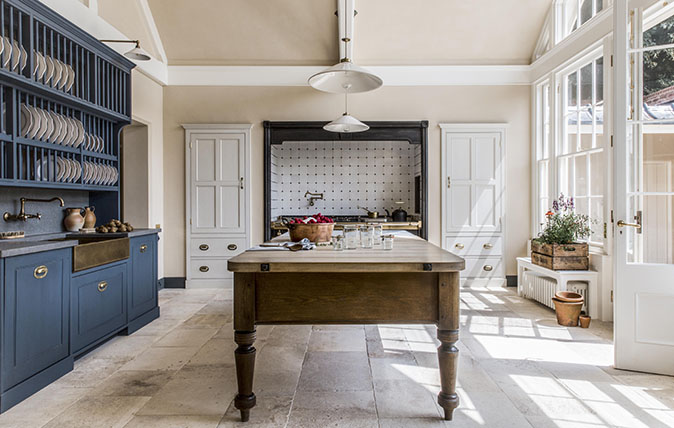
To complete the design, a brass sink replaces the lead one at Lanhydrock, with bespoke pewter drip trays for drying and storing plates fitted above. Hand-painted in a specialist distressed texture, the solid-timber furniture is true to Victorian design, as is the pair of dressers with sliding doors and handmade glass. ‘Symmetry always creates a sense of balance,’ he says.
‘Of course, by their nature, country-house kitchens of the past tended be large, but, whatever the size of our rooms today, they serve as a reminder not to crowd a space with furniture,’ says Mr Hodgson. ‘It’s better to select certain pieces and allow them to breathe, so that you can also enjoy the proportions of the room.’
Exquisite houses, the beauty of Nature, and how to get the most from your life, straight to your inbox.

He also believes the success of such kitchens – and the reason they have survived so well – lies in the fact that they were ‘well made from hardwearing materials. This kitchen will likely still be standing and working magnificently in 100 years or more.’
To find out more about Artichoke, please visit www.artichoke.co.uk.
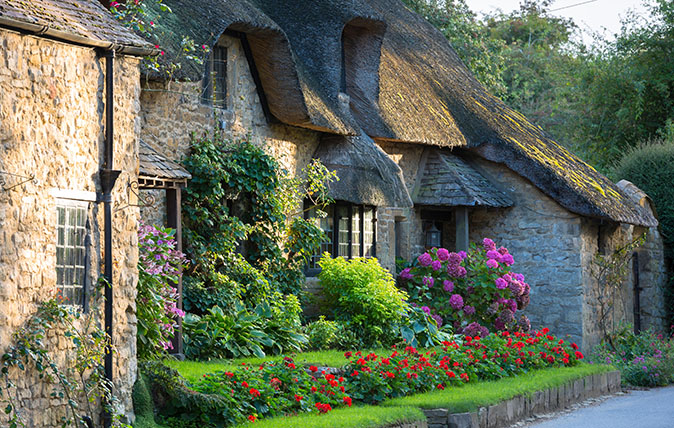
Credit: Alamy Stock Photo
The rise of the ‘super cottage’: Underfloor heating, dining table for 12 and claw-foot baths in the bedroom
Creaking country piles with drafty corridors and leaky roofs are increasingly a thing of the past - today's homes in
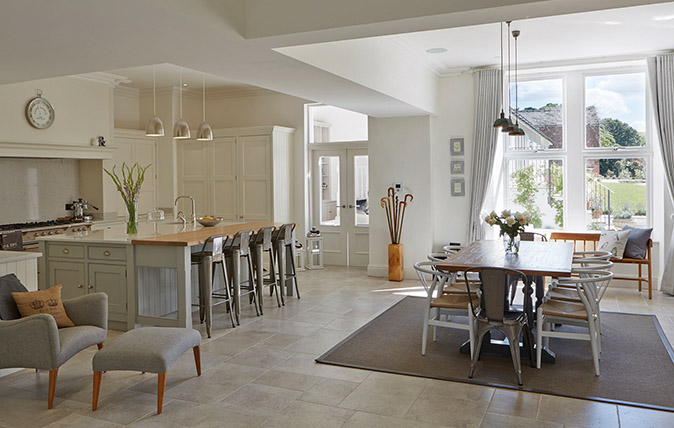
How to design a truly sociable kitchen: ‘It’s hard to believe that there was a time when a kitchen was simply a room for cooking and washing-up’
Kitchens have long been the hub of family life, but designs don’t always reflect that. Amelia Thorpe spoke to kitchen
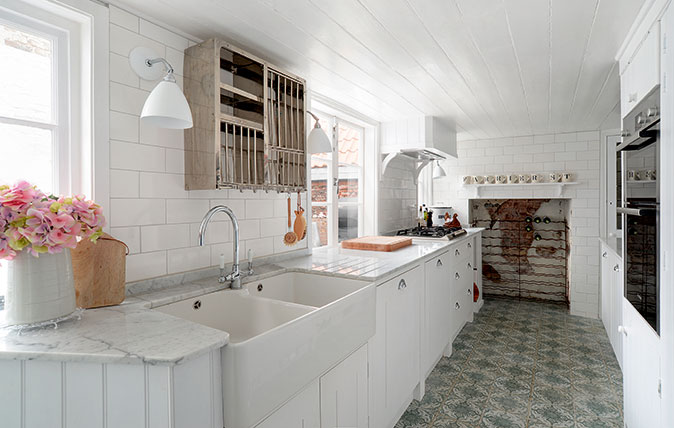
A beautiful townhouse in Deal with a kitchen that mixes modern and Georgian
This town house on the Kent coast has been restored by its actor owner to create a kitchen that’s sympathetic
